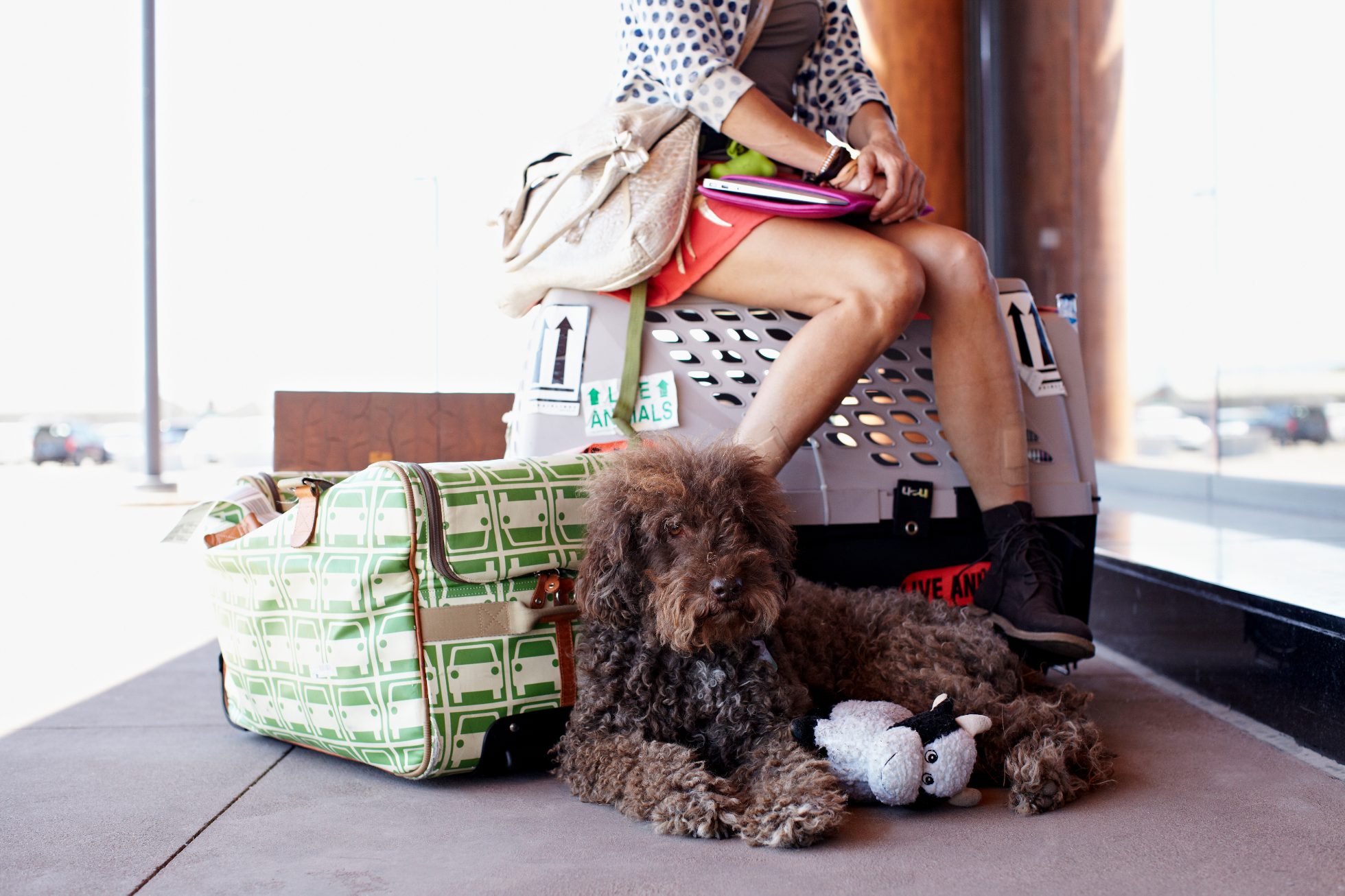
Air travel with a guide dog
A guide dog flying in the passenger cabin is subject to separate regulations and rules of travel.
Read more about the rules of traveling with an assistance dog.
Reading time 🕗 7 minutes | January 11, 2024 | Author Karolina Lesicka | Editor Klara Krysiak

Do you love your dog and dream of traveling with them? Are you hesitant about whether flying with a dog (especially in the cargo hold) is safe? Our step-by-step guide will explain what happens to your dog from the moment you hand them over to us at the airport. We'll also provide tips on how to prepare well for a plane journey with your dog and what to remember.
If you are reading this guide, you are probably wondering if you can take a dog on a plane. Of course, you can! Furthermore, with the growing trend of traveling with pets, there is also an increasing concern for their comfort and safety during the flight. On our flights, dogs can travel both in the cabin and in the cargo hold — it all depends on their dimensions, weight, and the availability of the service on the particular flight and in the chosen compartment.
How much does a plane ticket for a dog cost? You will see the exact fee when making a reservation, although you can view approximate prices on the website for pet in cabin or animal in hold.
Do you want to know how to travel with a dog with a flat muzzle? Some brachiocephalic breeds of dogs are subject to restrictions on transport in the cargo hold. Before purchasing a ticket for your four-legged friend, it is worth checking the information regarding restrictions on transporting dogs due to their breed.
Other permitted animals on the plane:
Familiarize yourself with the requirements for transporting dogs weighing less than 8 kg.


A guide dog flying in the passenger cabin is subject to separate regulations and rules of travel.
Read more about the rules of traveling with an assistance dog.
The ticket has been purchased, the decision has been made – your dog will fly in the cargo hold. If this is the first time for both you and your four-legged friend, below are some pieces of information that will dispel your doubts.
The cargo hold is not as intimidating as it may seem – we prioritize the comfort and safety of our four-legged passengers. Airlines also have special procedures for loading and transporting animals, and the conditions inside the cargo hold are closely monitored, adhered to, and checked. So, your dog will not be accepted and will not fly in an aircraft that is not suitable for this purpose.
Familiarize yourself with the requirements for transporting animals over 8 kg.


When transporting dogs to the cargo hold, we aim to minimize the time between loading the aircraft and placing the dog's carrier in the cargo hold.
While waiting for loading, we strive to limit harmful external factors that could affect the dog's well-being, such as excessive exposure to sunlight, rain, frost, or other adverse weather conditions. Dogs awaiting loading are not exposed to direct sound from engines and other high-volume machinery operating at the airport.
The cargo hold is nothing but the airplane's luggage compartment. If your dog weighs more than 8 kg, and you can't part with him for the duration of your trip, you'll need to reserve a spot for him underneath the aircraft.
Large dog on the plane
Before you purchase a spot in the cargo hold for your four-legged friend, remember that the maximum weight of the dog along with the carrier cannot exceed 99 kg.

Do you still have some time before your scheduled departure? It's time for a detailed inspection of your dog's carrier for the flight!
When planning a trip with your dog, make sure to choose a quality carrier — it's almost like choosing a travel class that affects the conditions your dog will experience in the air.
This is the last call! Make the most of the final days before your flight to prepare your dog as best as possible for air travel. Consult your veterinarian about their condition, ensure the carrier is properly equipped, and practice entering and exiting the carrier.

Do you love animals? So do we! Now you also know that we make every effort to ensure your dog's journey is as smooth as yours. Before you start browsing offers on our airline's website, read the key points from the guide once again, gathered in one place.
You can find more tips and information in the Help Center under the Pet Transport section and on the IATA website: https://www.iata.org/en/programs/cargo/live-animals/pets/.